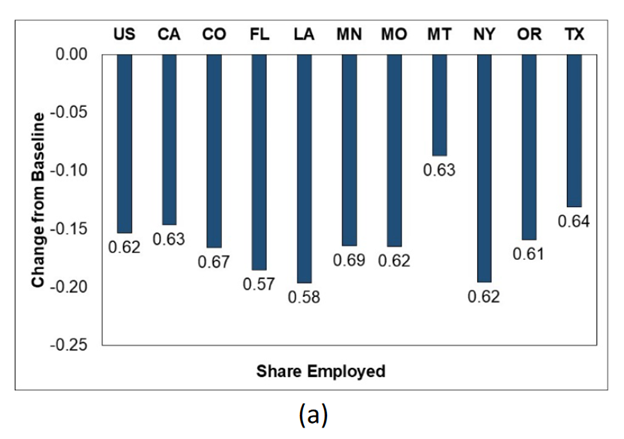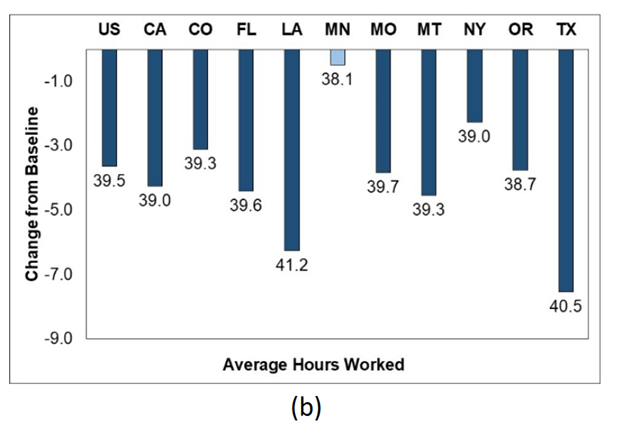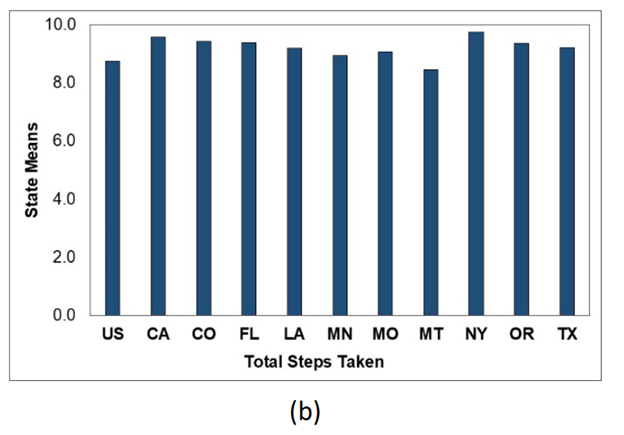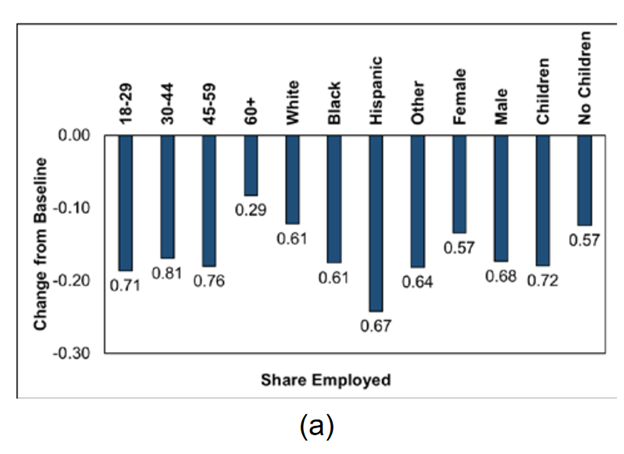NEW: My paper using @COVIDImpact data to study disparities in how set of wellbeing indicators changed in pandemic.
I also study impacts of COVID exposure/illness on outcomes and behavior, bc ability to care for oneself is a function of other disparities. \thread https://twitter.com/MinneapolisFed/status/1260676099014615041">https://twitter.com/Minneapol...
I also study impacts of COVID exposure/illness on outcomes and behavior, bc ability to care for oneself is a function of other disparities. \thread https://twitter.com/MinneapolisFed/status/1260676099014615041">https://twitter.com/Minneapol...
I look at changes from pre-COVID benchmarks in multiple measures of wellbeing, across people and places.
Place-level analysis suggests places have very different experiences, though all have suffered.
Place-level analysis suggests places have very different experiences, though all have suffered.
…but these are unrelated to local behavior, local restrictions, or other pre-COVID places characteristics. Here’s average total mitigation steps taken, across places.
Disparities in COVID impacts across people also significant.
Bigger employment declines for Hispanic, Asian (maybe), younger workers and those with children.
No detectable black/white differences in employment change.
Bigger employment declines for Hispanic, Asian (maybe), younger workers and those with children.
No detectable black/white differences in employment change.
Here& #39;s employment declines by demographic group.
Conclusion 1: Target people, not places, for relief. It’s clear who is disproportionately impacted, and differences across places seem mostly related to who lives there, not other place characteristics.
This aligns with evidence from other sources. But @COVIDImpact allows me to look at how exposure to COVID itself, or parallel illness, is related to outcomes. Key findings here…
Those with COVID diagnosis in the home did not reduce hours or employment. Given that this was mid-April, there’s a concern that those who could spread virus kept working if they could. (See paper Table 2.)
Those with fever in last 7 days *also* kept working. No reduced hours or employment. They do report worse mental health, which may relate to concerns about personal health or impacts on others. This suggest folks know there’s a problem but not adjusting work. (See paper Table 3.)
Therefore, conclusion 2: Target people who are symptomatic with aid. More simply, pay people to stay home. CARES Act expansion of paid leave may not go far enough.
Caveat! More data arriving later this week. Results may change!
Full paper here:
https://www.minneapolisfed.org/institute/working-papers-institute/iwp32.pdf">https://www.minneapolisfed.org/institute...
Full paper here:
https://www.minneapolisfed.org/institute/working-papers-institute/iwp32.pdf">https://www.minneapolisfed.org/institute...

 Read on Twitter
Read on Twitter





